#qohor
Explore tagged Tumblr posts
Text

2 daughters of a wealthy Valyrian merchant. Left : Yunkish Mother Right: Qohorish Mother
169 notes
·
View notes
Text
Fashion in Essos
Free Cities pt. 3
Myr


💜01: Dress (PERMAPAYWALL) | Headpiece | Hair |
💜02: Dress (PERMAPAYWALL) | Headpiece | Hair |
Qohor


💜01: Dress | Headpiece | Hair | Wig (PERMAPAYWALL) sorry :/ |
💜02: Top | Skirt | Headpiece | Hair | Wig | Hat/Veil | Necklace
Lorath


💜01: Dress | Poncho(reuplod cause page it's gone) | Hair | Boots |
💜02: Dress | Cloak | Hair | Boots | Gloves
#ts4 simblr#simblr#ts4#the sims 4#sims 4#sims 4 simblr#sims 4 medieval#ts4 medieval#sims 4 screenshots#ts4 cas#ts4 fantasy#ts4 poses#my sims#ts4 screenshots#show us your sims#ts4cc#ts4ccmm#asoif/got#asoiaf#a song of ice and fire#free cities#qohor#lorath#pentos#fashion in asoiaf
125 notes
·
View notes
Text
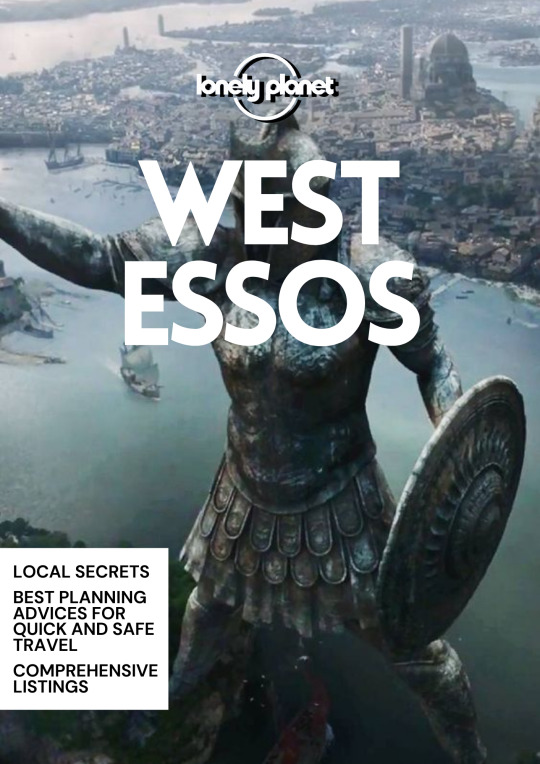

𝗧𝗢𝗨𝗥𝗜𝗦𝗧 𝗔𝗨- 𝗔 𝗦𝗢𝗡𝗚 𝗢𝗙 𝗜𝗖𝗘 𝗔𝗡𝗗 𝗙𝗜𝗥𝗘
So in the spirit of Christmas and the New Year’s, I decided to come back with a series that I love a lot. I have been thinking how I was gonna do this. Because Westeros is far more of a contained kind of thing than the rest of the world of a song of ice and fire, but I decided to separate Essos into three books, then I’ll do the rest of the continents one by one I guess but yeah you’ll have a lot of this serious next year. So those who like it you’re in luck for those who didn’t care well don’t know why you’re here.
BRAAVOS. PENTOS. MYR. VOLANTIS. LYS. TYROSH. STEPSTONES. QOHOR. LORATH.
#essos guide for tourists#west essos guide for tourists#game of thrones#essos tourism au#a song of ice and fire#got#asoiaf#tourist au#braavos#pentos#myr#volantis#lys#tyrosh#stepstones#qohor#lorath
62 notes
·
View notes
Text
Chapter 13 of “Alyssa the Dauntless” is up! Saddle up, we are bringing a passenger today 👀

#house targaryen#house of the dragon#hotd memes#hotd oc#essos#volantis#qohor#house maegyr#alyssa targaryen#Alyssa the Dauntless#hotd#hotd fanfic#yearning hours#pining#dragon cannibal#cannibal the wild dragon
7 notes
·
View notes
Text
Qohor

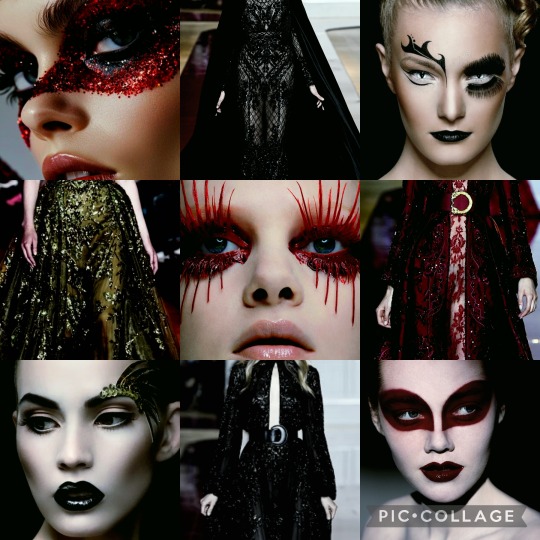
Qohor is the westernmost and most mysterious of the Free Cities of Essos.
It is considered a city ruled by sorcerers, where blood magic and necromancy abound, but the city is also an important trade hub and an international center for the art of blacksmithing.
Qohor is also known as the place where the dragonlord Aurion, in the aftermath of the Doom of Valyria, gathered his army, which soon after disappeared without a trace.
4 notes
·
View notes
Text
A Game of Thrones, Eddard IV
He found four members of the small council waiting for him.
The chamber was richly furnished.
Myrish carpets covered the floor instead of rushes, and in one corner a hundred fabulous beasts cavorted in bright paints on a carved screen from the Summer Isles.
The walls were hung with tapestries from Norvos and Qohor and Lys, and a pair of Valyrian sphinxes flanked the door, eyes of polished garnet smoldering in black marble faces.
#a game of thrones#eddard iv#asoiaf#a song of ice and fire#eddard stark#small council#council chambers#red keep#myr#carpets#art#carvings#beasts#summer isles#tapestries#norvos#qohor#lys#free cities#valyria#sphinxes#valyrian sphinxes#eyes#garnets#jewels#marble#varys#petyr baelish#renly baratheon#grand maester pycelle
16 notes
·
View notes
Text

#black goat of qohor#vargo hoat#a storm of swords#fanart#drawing#illustration#asoiaf#a song of ice and fire#the winds of winter#game of thrones#asoiaf fanart#valyrian scrolls#art#my art#character design#grrm
60 notes
·
View notes
Text



Free, Florence and the Machine
Her mother had died birthing her, and for that her brother Viserys had never forgiven her. […] They had wandered since then, from Braavos to Myr, from Myr to Tyrosh, and on to Qohor and Volantis and Lys, never staying long in any one place. Her brother would not allow it.
A Game of Thrones, Daenerys I
Day followed day, and night followed night, until Dany knew she could not endure a moment longer. She would kill herself rather than go on, she decided one night …
A Game of Thrones, Daenerys III
As Daenerys Targaryen rose to her feet, her black hissed, pale smoke venting from its mouth and nostrils. The other two pulled away from her breasts and added their voices to the call, translucent wings unfolding and stirring the air, and for the first time in hundreds of years, the night came alive with the music of dragons.
A Game of Thrones, Daenerys X
#daenerys targaryen#canondany#daenerystargaryenedit#targnation#asoiafedit#userleah#usermali#userneve#mine*#child of storm#gifs
431 notes
·
View notes
Text
Especially in A Dance with Dragons, George gets REALLY invested in Essos, much more so than in previous books. We get a whole chapter of Tyrion infodumping about Volantene electoral politics, we get the Tattered Prince who wants to conquer Pentos all of a sudden. George says that he has a novella's worth of content he could write about Arya in Braavos if he ever had the time, and the narrative points out several times that there is about to be a new sealord in Braavos. Cyvasse (a Volantene invention) is all over the narrative, where previously in Feast it was just in Dorne. Tangled in the Meereenese web we have the fall of Astapor and like 10 different cities besieging Meereen (Tolos, New Ghis, Qarth, etc.) and Hizdahr is said to have distant family in half of those cities. In Tyrion's POV we get a view of the Rhoynish cities and even of Valyria itself (distantly), and the book ends with Dany in the Dothraki sea.
Trust that Essosi geopolitics is bubbling to a head in the last two books; the political situation of almost every major state in Essos (sorry Lorath and Qohor) is set up to be plot-relevant for Dany in Winds. The Meereenese Knot is nothing compared to the Essosi Knot for Winds of Winter.
72 notes
·
View notes
Note
what does it mean when maegery patroned merchants and singers? Is it just giving money to them or is it getting something designed? Is it like when someone writes a book and they get it distributed all in the book stores
Well, to patron merchants you simply buy stuff from them; it probably means she had some trusted dealers she went to to buy luxury goods. I often think of the description of the Small Council chamber as an indicator that luxury goods in Westeros are mostly bought from abroad, and you need merchants for that:
The chamber was richly furnished. Myrish carpets covered the floor instead of rushes, and in one corner a hundred fabulous beasts cavorted in bright paints on a carved screen from the Summer Isles. The walls were hung with tapestries from Norvos and Qohor and Lys, and a pair of Valyrian sphinxes flanked the door, eyes of polished garnet smoldering in black marble faces.
As for sponsoring singers, it would mean they were given food and lodging in exchange for entertaining the noblefolks, and probably also money and/or material gifts. You see it with Marillion at the Eyrie:
Since coming to the Eyrie, the singer had become her favorite. He sang Lord Robert to sleep every night, and tweaked the noses of Lady Lysa's suitors with verses that made mock of their foibles. Her aunt had showered him with gold and gifts; costly clothes, a gold arm ring, a belt studded with moonstones, a fine horse. She had even given him her late husband's favorite falcon. It all served to make Marillion unfailingly courteous in Lady Lysa's presence, and unfailingly arrogant outside it.
In the pre industrial Western society asoiaf draws from, artists and often even intellectuals (though the latter could be independently wealthy, which makes sense: there's a higher chance a wealthy person gave their children an education compared to the working classes, though entering the clergy could provide some upward mobility in that respect) depended on the patronage of kings, nobles, and to an extent of institutions such as the church or the state, as in the case of republics. This also meant their work circulated in a much more limited manner than it would do today; we don't call them "mass media" for nothing. Think of how before we figured out how to record and broadcast sounds (so a VERY recent invention), the only way to listen to music would have been to either play it yourself or find someone who played it. You understand that actually "owning" a guy who could play and possibly even write music for you was one hell of a status symbol. In asoiaf you see a pretty archaic version of this, with their singers being essentially troubadours and storyteller, but in essence that's what Mozart was also doing. Hope that answers your question anon!
33 notes
·
View notes
Text
This bullshit has been sitting in my chest since season 2 ended, so...
...can someone please, please, please explain to me why Aegon uses a real life islamophobic slur - "Goatfuckers" - famously used by US occupiers in the Middle-East against its muslim and brown population? In what fucking world does this shit make sense or is in any way okay?
THE EXPOSURE OF WESTEROS TO ESSOS IS DOMINATED BY THE CULTURAL AND COMMERCIAL IMPORTS FROM THE FREE CITIES, EACH ONE SIGNIFICANTLY MORE ADVANCED THAN WESTEROS. WHY WOULD HE EVER FUCKING ASSOCIATE THE ESSOSI WITH GOATS TO BE USING A FAMOUSLY ANTI-MUSLIM SLUR AGAINST THEM???
I'll fucking tell you why, and it's not because they're trying to make Aegon out to be an even bigger piece of shit after that hamfisted, biased fucking addition of making him a rapist. Oh no, this show doesn't get to use that cop-out. It doesn't think it's an islamophobic slur, that's the truth of this shit. The sad truth, with how normalized islamophobia has become in the west. As far as most fans and the writers themselves are concerned, he used an anti-goatherder slur (and the fact that the pluralistic people he used it against are largely brown is a coincidence, I'm sure).
I'd be surprised if they even knew the existence of Qohor or it's state religion (the Black Goat), but even if they did (be for fucking real, please) it's literally the easternmost Free City with arguably the least influence/exposure possible in Westeros.
You may ask: how do I know it's islamophobia? Why, what else could it be, dear reader, when we have esteemed writers such as Sara "we based Girlboss Rhaenys on girlboss (read: war-criminal who should be shot) Hillary Clinton" Hess on the team?
The fact is, the white-as-rice valeman are infinitely more likelier to be called goatfuckers than any brown people Westeros at large are exposed to on the regular, but the writers's own racist asses don't know that, despite having the braincells to make an actually fitting insult in season 1 by Daemon regarding his own wife from the Vale, but this would be the smallest inconsistency between the season these "professional" writers are guilty of.
I consider the worst part of all this shit to be that the fandom at large barely registers this issue, not even the show's critics it seems, relative to its other flaws. The last time I saw mention of this was at the end of season 2, and just silence after.
But really, should it be a surprise, after how disgustingly lauded Gwayne's classist and racist behavior against Criston Cole was, arguably the principal brown character in the show, and how he became an unapologetically instant fav of Team Black for it?
#asoiaf#house of the dragon#hotd#anti hotd#hotd critical#anti hotd fandom#anti sara hess#anti ryan condal#islamophobia#anti team black stans#anti team black#team black#team green#aegon ii targaryen#criston cole
60 notes
·
View notes
Text
I noticed a little subplot happening in the background of ADWD, and I’m wondering if anyone has any theories on where this is going. I have my own theory, which I'll explain in full at the end, but is essentially this: I think that GRRM is placing these Dothraki khalasars strategically along the Rhoyne and telling us about them in ADWD so that if Dany commands the loyalty of the entire Dothraki in TWOW, she'll already have loyal armies in place right by the Free Cities, rather than having to wait transport troops anywhere—even though the Dothraki aren't a threat now, the Dothraki will be in place to attack the Free Cities while the Free Cities have sent all their armies to fight Dany's forces at Meereen.
I'll explain my reasoning, and where I think GRRM is putting the pieces into place here—under the cut, since it's a slightly long post with maps.
We first hear of Dothraki along the Rhoyne in ADWD Tyrion III:
“Griff means to strike downriver the instant we are back. News has been coming upriver, none of it good. Dothraki have been seen north of Dagger Lake, outriders from old Motho’s khalasar, and Khal Zekko is not far behind him, moving through the Forest of Qohor.” The fat man made a rude noise. “Zekko visits Qohor every three or four years. The Qohorik give him a sack of gold and he turns east again. As for Motho, his men are near as old as he is, and there are fewer every year. The threat is—” “—Khal Pono,” Haldon finished. “Motho and Zekko flee from him, if the tales are true. The last reports had Pono near the headwaters of the Selhoru with a khalasar of thirty thousand. Griff does not want to risk being caught up in the crossing if Pono should decide to risk the Rhoyne.”
As a reminder, Dagger Lake is where the Rhoyne in the east meets the Qhoyne in the west to make the full-force Rhoyne that we know and love.
Illyrio dismisses any reason to be concerned with these particular Dothraki, and perhaps he is right. But we do get our first preview into the concerns of Khal Pono, and the premise of Dothraki along the Rhoyne. Are they doing to be placated by gifts, like Illyrio says? Or is something different afoot?
Next we get an update in Tyrion VI, by Selhorys.
Haldon Halfmaester explained. “On the way down from the Sorrows to Selhorys, we thrice glimpsed riders moving south along the river’s eastern shore. Dothraki. Once they were so close we could hear the bells tinkling in their braids, and sometimes at night their fires could be seen beyond the eastern hills. We passed warships as well, Volantene river galleys crammed with slave soldiers. The triarchs fear an attack upon Selhorys, plainly.”
Another reminder for geography, Selhorys is significantly south from Dagger Lake. Like, further than King’s Landing is from the Trident. Once again, we have this concern: will Khal Pono cross the Rhoyne for Selhorys?
That concern is brought up again in Tyrion VI:
“Three,” Qavo allowed, “against thrice three thousand enemies. Grazdan mo Eraz was not the only envoy sent out from the Yellow City. When the Wise Masters move against Meereen, the legions of New Ghis will fight beside them. Tolosi. Elyrians. Even the Dothraki.” “You have Dothraki outside your own gates,” Haldon said. “Khal Pono.” Qavo waved a pale hand in dismissal. “The horselords come, we give them gifts, the horselords go.” He moved his catapult again, closed his hand around Tyrion’s alabaster dragon, removed it from the board.
As predicted by Haldon in Tyrion III, here is Khal Pono across from Selhorys. We hear that Qavo is unconcerned with Khal Pono, despite Haldon’s concerns.
This might be a bit of a meta opinion, but whenever someone is as flippant as Qavo is being here, expect them to be wrong. They definitely aren’t going to go away with gifts, Qavo is totally jinxing it—that’s my prediction.
Then we get another update later on, in The Lost Lord:
Haldon’s horses did not please him. “Were these the best that you could find?” he complained to the Halfmaester. “They were,” said Haldon, in an irritated tone, “and you had best not ask what they cost us. With Dothraki across the river, half the populace of Volon Therys has decided they would sooner be elsewhere, so horseflesh grows more expensive every day.”
By this point, they’re in Volon Therys, which is only barely outside of Volantis—think roughly the distance between King’s Landing and Duskendale, for comparison. And here, too, there are Dothraki on the other side of the river. Are these the same Dothraki, are they traveling south at the same pace as Tyrion/JonCon? Or is this yet another khalasar? We haven’t heard any update from Qohor, and this is the first time that we’ve unexpectedly encountered a khalasar—are they here to meet with the Volantenes about Meereen, like Dany’s advisors fear? Or are they here for another reason? Is it possible that Illyrio and Qavo are wrong?
The last update we get is in ADWD Victarion, when he captures a ship from Myr heading for New Ghis and Yunkai:
Sailing out of Myr, the Dove brought them no fresh news of Meereen or Daenerys, only stale reports of Dothraki horsemen along the Rhoyne, the Golden Company upon the march, and others things Victarion already knew.
Unfortunately, this is stale news for both Victarion and we the readers—this is like a snapshot back to Tyrion II/III, when the Golden Company broke its contract and started marching east, and when we first heard about the Dothraki on the Rhoyne in my first quote.
However, despite this being a snapshot back in time to old news, I wonder about GRRM’s choice to include this again so close to end of the book—is this a reminder for the readers about these Dothraki on the Rhoyne? We’ve learned why the Golden Company marching ended up being important, could this passage from Victarion be a reminder of these tidbits of news because they will continue to matter moving forward?
I am doubly interested because it’s in this same book, in the very midst of all this talk of Dothraki on the Rhoyne, that we hear the tale of a previous time the Dothraki came. This is back in ADWD Tyrion IV, between the reports of Motho and Zekko on Dagger Lake and before the talk with Qavo about Pono. I’ve bolded the relevant sections, because it’s long, but left the rest for context.
“The war left the Disputed Lands a waste, and freed Lys and Myr from the yoke. The tigers suffered other defeats as well. The fleet they sent to reclaim Valyria vanished in the Smoking Sea. Qohor and Norvos broke their power on the Rhoyne when the fire galleys fought on Dagger Lake. Out of the east came the Dothraki, driving smallfolk from their hovels and nobles from their estates, until only grass and ruins remained from the forest of Qohor to the headwaters of the Selhoru. After a century of war, Volantis found herself broken, bankrupt, and depopulated. It was then that the elephants rose up. They have held sway ever since. Some years the tigers elect a triarch, and some years they do not, but never more than one, so the elephants have ruled the city for three hundred years.”
Maybe this wasn’t just to set the stage for the Volantene elections, but to remind us that the Dothraki can come out of the east to wreak havoc…. when the Free Cities are weak. And boy, is Volantis looking undefended right now: the Golden Company is gone to Westeros, other sellsword companies have gone to Meereen, the Volantenes have sent their fleets to Meereen.
Before I continue, here’s a map of the locations of the Dothraki khalasars along the Rhoyne:

Why we should care
We can be almost certain that Dany has to return to Vaes Dothrak to visit the Dosh Khaleen. Though we don’t know for sure if Khal Jhaqo’s forces are going to outpower Dany and Drogon, Dany is already envisioning the future where she returns to Vaes Dothrak when she sees Jhaqo’s outrider at the end of ADWD:
One rider, and alone. A scout. He was one who rode before the khalasar to find the game and the good green grass, and sniff out foes wherever they might hide. If he found her there, he would kill her, rape her, or enslave her. At best, he would send her back to the crones of the dosh khaleen, where good khaleesi were supposed to go when their khals had died.
Of course, we ought to already have known this from Dany’s vision in the House of the Undying:
Beneath the Mother of Mountains, a line of naked crones crept from a great lake and knelt shivering before her, their grey heads bowed.
If Dany was truly seeing her future—and I believe she was—then we know we will inevitably be seeing her return to Vaes Dothrak to accept the homage of the Dosh Khaleen.
However, this creates a bigger problem: we need Dany to get to Westeros, and potentially have time to also reach both Volantis and Pentos (though whether or not Dany will actually go either of those places is purely speculation, however well-founded). Vaes Dothrak is in the entirely opposite direction from where she is now—that would be heading east, away from Westeros, not closer to her end goal.
For some readers, this isn’t a concern: we might trust Quaithe, who reminds Dany that:
To reach the west, you must go east. To go forward you must go back, and to touch the light you must pass beneath the shadow.
Some readers, though, wonder about the time and ability for TWOW to contain this storyline within its time. GRRM is realistic about how long travel time takes, which is great for the realism, but presents immense logistic problems.
Dany doesn’t need to worry about the time it takes to travel long distances as mucha as she used to—if she can begin to control Drogon, she can fly around at will. However, that’s only her; if Dany does gain the allegiance of the Dothraki at Vaes Dothrak, how can she actually leverage that in a meaningful way when they’re constrained to horseback? While the AGOT timeline is largely unclear, we can use Dany’s pregnancy to at least be sure it takes months to get from one side of the Dothraki Sea (in Dany III) to Vaes Dothrak (in Dany IV). Does Dany have months to mobilize Dothraki from one side of the Sea to the other?
With the Dothraki along the Rhoyne, though, she doesn’t need to wait for anyone to ride across the sea. Conveniently, they’re already there. If there’s some way to send a message that the Dosh Khaleen have decreed that the Dothraki will follow Dany, that she is the Stallion Who Mounts the World, then she has a ready-made army just waiting for her word to cross the Rhoyne after all, and take the Free Cities. Then Dany can fly over there on her own and just meet them.
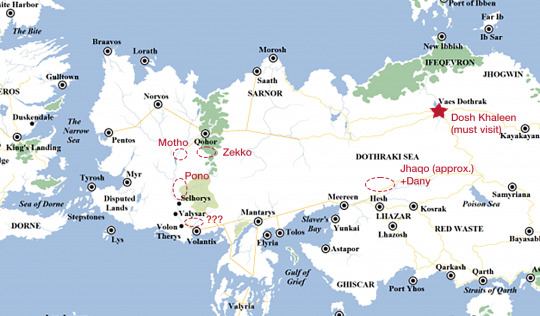
I know we’re all looking forward to Dany taking Volantis, so I don’t want to propose something too contrary, but how about this: sicne we’ve been hearing all through ADWD that there are a ton of Dothraki already in place, conveniently for story purposes, ready to accept their regular gifts… or perhaps ready to act if, for example, word came that the Stallion Who Mounts The World has come after all. That might speed things up a bit. We know Volantis is only weakly defended, we know there are Dothraki outside of Selhorys, Qohor, and Volon Therys. Dany has spent five books searching for home and finding one among the people she’s freed. Maybe this is how she makes sure it’s the Volantene slavers who don’t have a home to go back to this time.
#asoiaf#asoiaf meta#jozor thoughts#valyrianscrolls#twow speculation#dothraki#daenerys targaryen#dany
65 notes
·
View notes
Text
Valyrian Pantheon Headcanons
We know the names of 5 of the Valyrian gods and that's it. We don't know anything about the practices or even what those gods were patrons of. Here is my headcanon reconstruction of the pantheon ^_^
I think the Fourteen Flames (the volcanoes) are named for fourteen gods who constitute the main pantheon, similar to the 12 Greek Olympians or the 12 Roman Dei Consentes. There are many minor gods, usually personifications of concepts like seasons/emotions.
I imagine them like Egyptian gods, who are personified sometimes as humans, sometimes as animals, sometimes as animal-headed humanoids. I imagine the main fourteen as dragons, though idk how silly that would look lol.
I think they were also androgynous gods. Why? That's fun. That's so fun. Dragons are theorised to be hermaphroditic/intersex who can change their sex at will, but also are referred to as she-dragons if they are confirmed to lay clutches of eggs. So some of these gods are gods, and some are goddesses, despite being a-gender
Canonical Gods
BALERION: I believe Balerion's name is at least a little inspired by Ba'al, an ancient Semitic god who was very important to the religions of the region (Canaan, Babylon, etc) and features as a false god in the Hebrew bible. I think he's the King of the gods, like Zeus. God of war or fire or conquest or all of the above. Many ancient gods shifted their patronage and powers.
VHAGAR: Consort of Balerion, similar to Hera. Goddess of war/wisdom, similar to Athena. I think this fits a person like Visenya.
MERAXES: Perhaps a concubine of Balerion? Like how Zeus had thousands of lovers. Metis, Leto, Demeter, etcetera. Goddess of love, because Rhaenys seems like a woman who enjoyed love and life. Perhaps also a goddess of marriage?
SYRAX: It's gotta be someone Rhaenyra would think is cool. Perhaps a goddess of the sun/moon? Another war goddess? A queen? Actually, perhaps Syrax is the Hera of the pantheon, while Vhagar is not necessarily virginal like Athena but 'unmarried' so to speak. Goddess of beauty/wealth would also fit Rhaenyra. Goddess of the sun or moon would be fun in opposition to Sunfyre.
BOASH: called 'The Blind God' Mentioned as the god the Lorathi worship, whose religious followers (dissidents of the Valyrian Freehold) founded the city of Lorath. The name doesn't follow the typical Valyrian naming traditions, perhaps he was originally Boax/Boaxes? Would be fun. He's a very esoteric god connected to 'higher truths', the priests are eunuchs and the followers are vegetarian teetotalers and a main tenant is that everyone is equal. They also wear hair shirts which is an old Christian practice. I think he's a version of a Valyrian death god
the BLACK GOAT: Whose followers founded Qohor. I think he's a minor god, perhaps of magic or agriculture even, agricultural deities tend to be very important to common folk. However the goat imagery evokes Satan and Baphomet, so I think a villainous or death deity would be fun.
Non-canonical gods
A lot of the Targ dragons are given names with similar naming style to the canonical god dragons.
VERMITHOR & VERMAX: The naming conventions of Vermax and Vermithor intrigue me... I think one is the name of the God and one is a theophoric name in reference to the god. Perhaps a god of justice, law, order, etc, since they were the dragons of Jaehaerys and Jacaerys and I can see them picking that kind of God.
ARRAX: Lucerys names his dragon this, so I think a coming-of-age god or god of youths would be fun since he, yknow, got eated at 14.
CARAXES: This is Daemon's dragon so I'm saying Caraxes is the Dionysus/Hermes trickster god. Daemon picking the bacchanalian drunk sex god for his dragon is real to me.
MELEYS: Rhaenys TQWNW's dragon. Rhaenys gives off SUCH demeter vibes idk so agricultural god would be fun but idk i don't think she'd pick something like that. Perhaps its based off of Meraxes since Rhaenys is her namesake. Perhaps an oceanic or weather-based god.
MORGHUL: Morghul is simply the word for death in High Valyrian e.g. 'Valar Morghulis', but I like it as a euphemistic name for a God of death. Like his name is so tabboo that you just refer to him as death, or he's just named death in relation to afterlife, like how Hades refers to both the god and the underworld. I think perhaps Boash and the Black Goat are actually interpretations/aspects of the same deity, perhaps a death - morghul - god.
SHRYKOS: Sick name sorry just had to say that. He's Jaehaerys (son of Helaegon)'s dragon. got no clue what he could be a god of cos jaehaerys is a plot device character. I think he's just a cool Valyrian word, like Morghul, since Jaehaerys and Jaehaera are twins. Be fun if they picked life/death dichotomy for their dragons :p
TERRAX: ridden by the pre-doom character Jaenara Belaerys, who flew further south in Sothoryos than anyone else. God(dess) of travel/wisdom/conquest/oceans would be fun since she's a traveller who flew across oceans and sort of exemplifies the Valyrian conquest/adventurer spirit.
TESSARION: Okay the blue queen has to be a goddess of the ocean or the sky<3
TYRAXES: Joffrey's dragon :) I think a god of animals would be cute also cos he sounds like T-rex. I would name my dragon T-rex. Possibly a bastardisation of Terrax though...
URRAX: This is the name of a legendary/fairytale dragon from the story of Serwyn and Daeryssa from the Age of Heroes. By Daeryssa's naming convention and the fact she is mentioned only in AGOT, I think she was perhaps supposed to be a Targaryen before GRRM had established a full history. I think he's just a bastardisation of perhaps a Valyrian god like Arrax.
So my vision of the Valyrian pantheon includes Balerion, Vhagar, Meraxes, Syrax, Vermithor, Arrax, Caraxes, Terrax, Tessarion, which is 9 gods
plus Meleys and Tyraxes who I'm not sure if I want to be referring to above gods or just the name of a god entirely, which makes 11
Adding a death god (Boash, Black Goat, Moghul) makes 12,
which leaves another two unnamed for my personal idea of a Valyrian pantheon :)
199 notes
·
View notes
Note
As the fandom’s resident fashion historian, do you have any thoughts about wedding dresses/apparel in Planetos? Personally, I weddings are a great place to showcase the differences between the regions especially with traditions, superstitions, economy, and skills. For example, IRL there is a superstition, if a bride makes her dress, each stitch a bride makes is the equivalent to the tears she will shed during the marriage but I can’t see that translating to Westeros where the small folk or even every member of house Frey or house Reed aren’t getting a custom dress. Maybe it’s traditional to wear colorful dresses in Dorne and heavy jewelry made by talented blacksmiths in Westerlands and trading cities use dresses with pearls (because in Meereen pearls=fertility) and myrrish lace to flaunt wealth but the North cause practically and reusability over fashion and maybe they pass down dresses, the Reach probably produces cotton so I imagine they would have more stylish and intricate designs, Qohor might have headwear with religious figures hanging from the fringe... I’ve thought about it a bit but I’d love to know your thoughts! 💚💛🖤💚💛
This will also include the other wedding asks I got and will probably be a two parter since there’s a lot to cover!
Wedding fashions part 1!

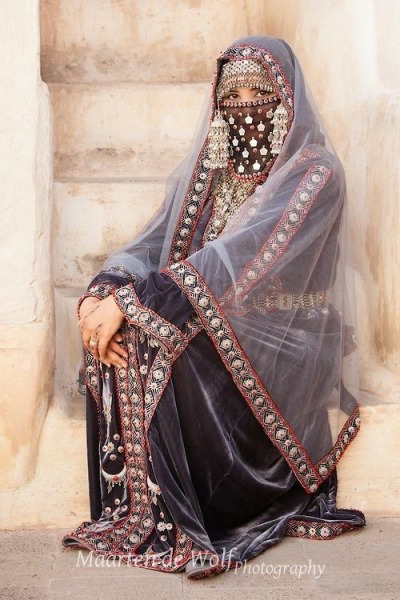
I’ve mentioned it before, but I like the idea of a Dornish bride “wearing” her dowry. Usually this consists of a veil made out of coins, or stitched into her gown, or placed into her headpiece. The fabric of the gown itself is also the finest the family can afford, and is expected to be sold if necessary (though noble families don’t usually do that). This practice isn’t only a tradition to show the groom’s family that he is not being swindled out of the agreed upon bride price, but is also a way for the family of the bride to show off their wealth. If a girl is especially wealthy, she may not even be able to wear the entire dowry, so her maids, ladies in waiting, animals, and every other thing she is bringing with her is decorated in wealth as well and presented to the groom
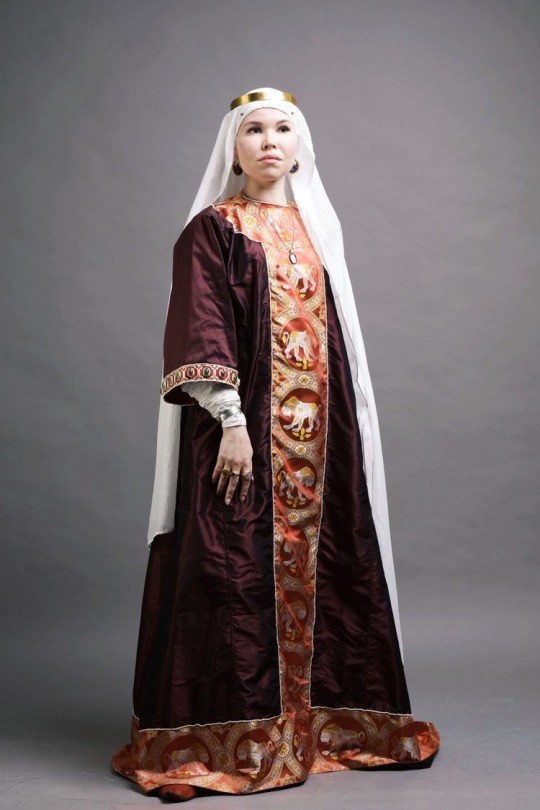
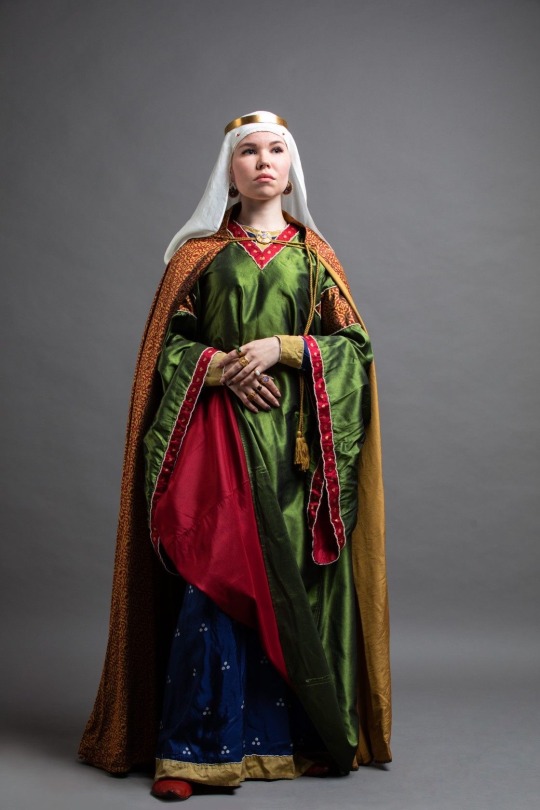
Stormlands women tend to be both proud and practical, so their dresses are made from the best materials they can afford, but practically cut and layered for the constant rainy weather. They’re also sacklike and large with very few adjustments so that the fabric can be repurposed later on. Most new gowns look like this anyway for the same reason, and wedding gowns are usually new. A woman’s dress will usually be in her family colors, and be patterned with their symbols as well, or maybe quartered with the grooms symbols and colors. If it’s not repurposed for other things, a gown might be reworn many times for social events, and even refashioned into a more stylish silhouette.
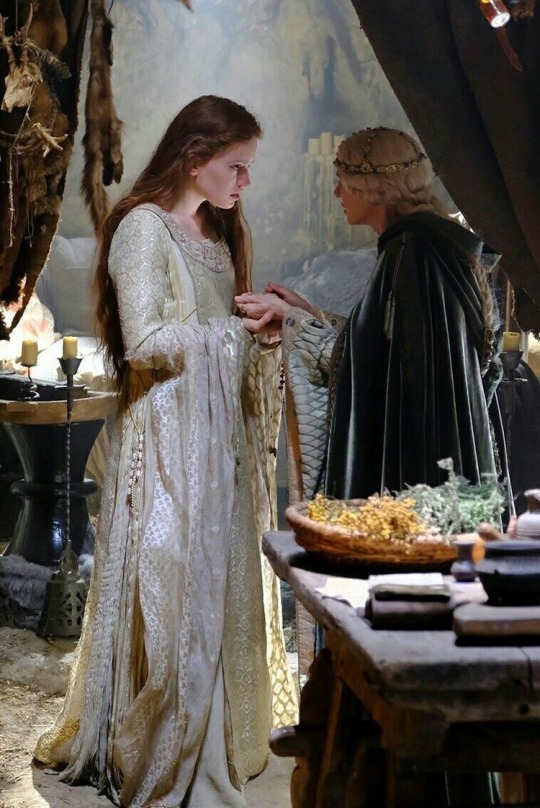

In the Riverlands, there’s no one type of wedding gown, as it’s so large and many of the brides will just wear one of their nicer gowns they already own, but the typical long flowing sleeves and loose overdress are common. Flower, vine, leaf, and other nature motifs are incredibly popular due to their connection to the fertility of the riverlands. So many girls will take a dress with a pattern, or embroider flowers onto it, or maybe pin real flowers onto their gowns, if they cannot afford to embroider or have a patterned gown. There’s a superstition that a bride with not enough flowers will not have any children, only have sickly/weak children. So the small folk especially incorporate as many flowers they can into their weddings

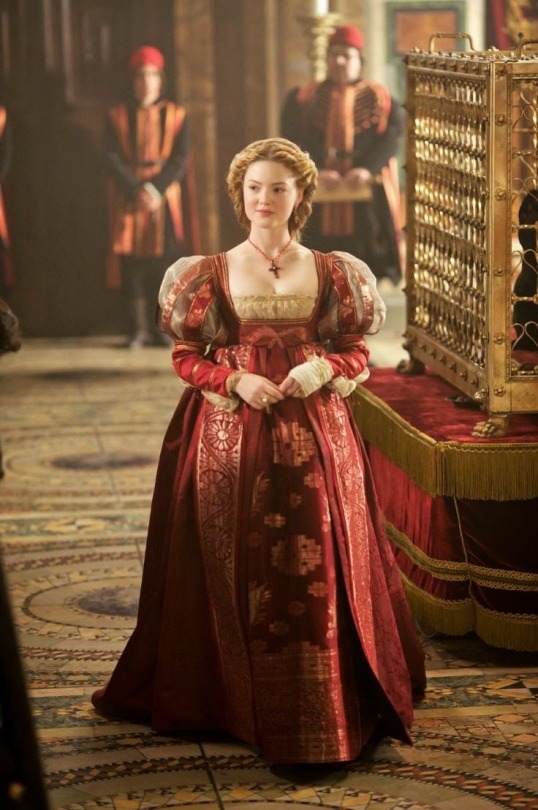
The Reach women’s favorite wedding tradition is seeing who can have the most expensive dress of the season. They’re even more ostentatious than their regular fashion, if that’s even possible. The puffed and slashed sleeves are made from the finest tulle and softest silk. Bodices trimmed in Myrish lace, patterned skirts that took months to make. Gold jewelry and hairpieces imported from the westerlands. Heavy wedding cloaks that are more pearls and thick embroidery than actual fabric. The cost of the yards of fabric used to make the gown is enough to make a Pentoshi merchant swoon. Essentially reach wedding gowns are just upping the ante of their regular dresses.
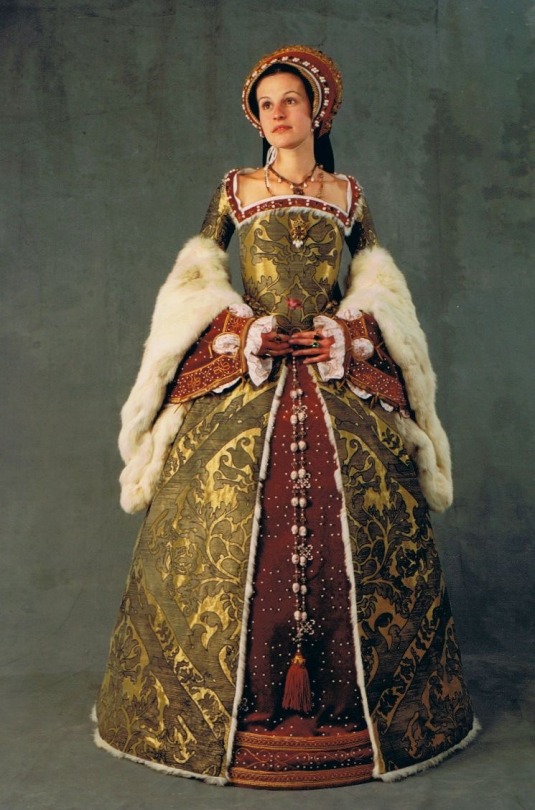
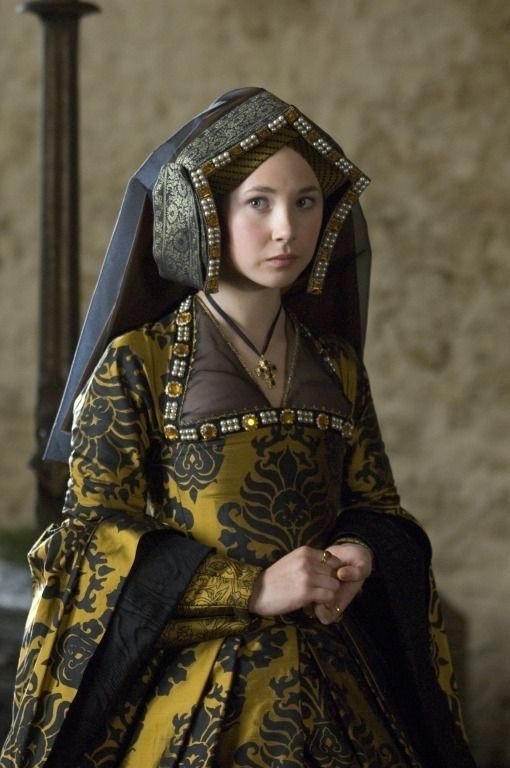
The wedding gowns of the westerlands are a bit less openly ostentatious than those of the reach, if only because someone doesn’t want to embarrass themselves in front of Tywin or Tywin-adjacent lords, who think to be too showy is a sign that you’re trying too hard. However the overdresses are still made of detailed brocade, necklines are decorated with pearls, and the lower sleeves are still big enough to drag. They still clearly rival the reach, but are also clearly having far less fun with their clothes. It might be a tradition for a woman to start wearing a type of hood on her wedding day, as a way to honor the mother and start promoting herself as lady of a noble house instead of an unwed girl
#asoiaf#asoiaf hair and clothing#you are going to take your Borgias inspired reach outfits again and you are going to like them
196 notes
·
View notes
Text
THE WORLD OF ICE & FIRE
Reading Order & Thoughts Apparently
//Investigative read with the aim of finishing a fanfic <SPOILERSGALORE>

~this is not intended to be useful in any way shape or form do not construe as such but laughing at it is ok~
The Dawn Age
-dragonglass arrowheads found in giant ribs could be from children-giant war but also cud just as easily be wight giant
-brandon the builder was taken to a secret place by the children when he sought help to build the wall hmmmmmm okk
-“the manner in which Brandon learned to comprehend the speech is a tale in itself and not worth repeating here”?????? WTAF fuck u condal i mean yondel tommen loves stories
-greenseers can see distant events AND COMMUNICATE?hmmmmmmmmmmmmmmmmplotdevice
-wolfcontrolling skinchangers maxxx common, separately called wargs? stark blood fuckfest much????
-Seastone chair on old wyk wo any ppl SUSSAUCE
The Coming of the First Men
-alleged timing 8000-12000 yrs ago hmmmmm if ww are 6000 yrs ago it’s almost halfway hmmmmmmm
-what they running from? first men possible valyrian ancestors upset w the animalxhuman experiments? conveniently vague time periods
-first settled on DORNE that goddamned desert summins up w ur magic stone i will find u
-greenmen antlermen same same????
-arm of dorne, marshes, all considered natural disasters but w doubt so why not children cause doom of valyria possible??
The Age of Heroes
-ringforts this ringforts that fist of first men this infrastructure that
-find thenn constr. & every single built structure NotW
The Long Night
-do monkeys and elephants have anything in common
-Barth’s “fragmentary treatise” everything shat out by Barth & Munkun makes me want to kms
-Fomas ur understated & prolly right u religious fuck
The Rise of Valyria
-new power in east right after LN recovery, what festive timing gee i wonder if these events r related
-first empire ofc ofc just after old ghis & Qarth & YiTi & Asshai but those r “claims” yea we don’t talk bout that look dragons! blood sacrifice!
-five great wars w ghis “when the world was young” hmmmmmmmm
-Shadow texts say dragons tamed by “people who had no names” hmmmmmmmm
Valyria’s Children
-Qohor&Norvos founded following religious schisms? Only Qohor smiths still know to rework VS
-way way way too many mentions of wealth & human flesh needed in the mines
-fire vs water
-sus that andals & rhoynar both fled from Valyrians but in the second coming “the gods” spoke to the HS while the waterbenders fought both times
-is the long night just fire vs water 2.0?
Arrival of the Andals
-wtf is a fucking swan maiden
-writing the lines of the hugor hill story backwards is not as great a puzzle as u seem to think
-Urron Redhand ruled IIs by “axe&sword” for 1000 yrs, throwaway name? I think the fuck not.
Ten Thousand Ships
-Nymeria of Ny Sar SUS naming
-“few wish to dwell beyond the sound of her eternal song” faith close to old gods
-wtf r the orphans of the greenblood upto
-davos dayne my new OC, forgive me as i project onto u for the forseeable future
-seriously tho the best part so far, need a movie for THIS not whatever fart pudding they baking
The Doom of Valyria
—wtf is the difference between the 14 fires & R’hollor summins weird
-accidental poisoning of one of the flames? like pollution but magical bywaste pollution
-red clouds rained down dragonglass???? and black blood of demons which cud just be dragon blood as they pop in the air from toxicity
-dothraki & sellsword companies both popularised only in the power vacuum
-the conquerer’s attention lay west even as a child hmmmmmm
#reading order is going to be a bit different than published#qarth#asshai#yiti#and all them eastern cities#essos#westeros#fire and blood#the hedge knight#and then the original series#a song of ice and fire#im not sure if this commentary is meta or meta enough but it is what it is#asoiaf#a game of thrones#asoiaf fandom#asoiaf meta#book commentary#asoiaf fanfiction#first time reading#book talk#reading the books#game of thrones#ao3#bookblr#reading#reading order#the world of ice and fire#twoiaf#reading twoiaf#a world of ice and fire
23 notes
·
View notes
Text

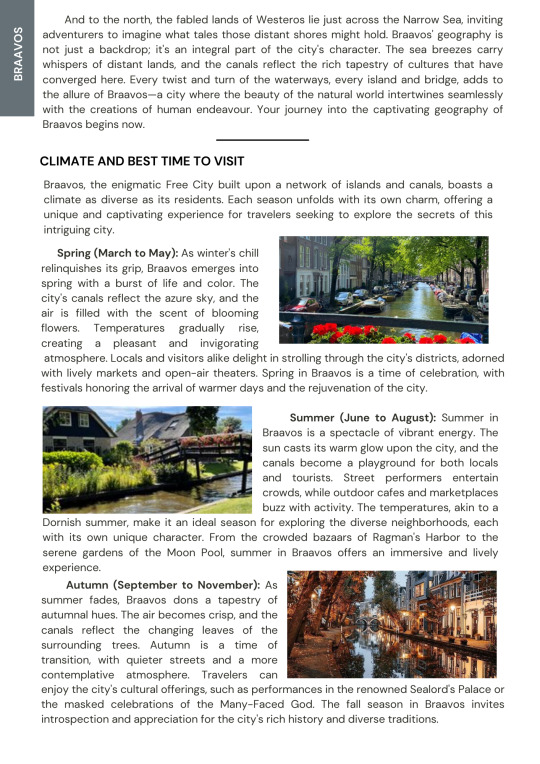
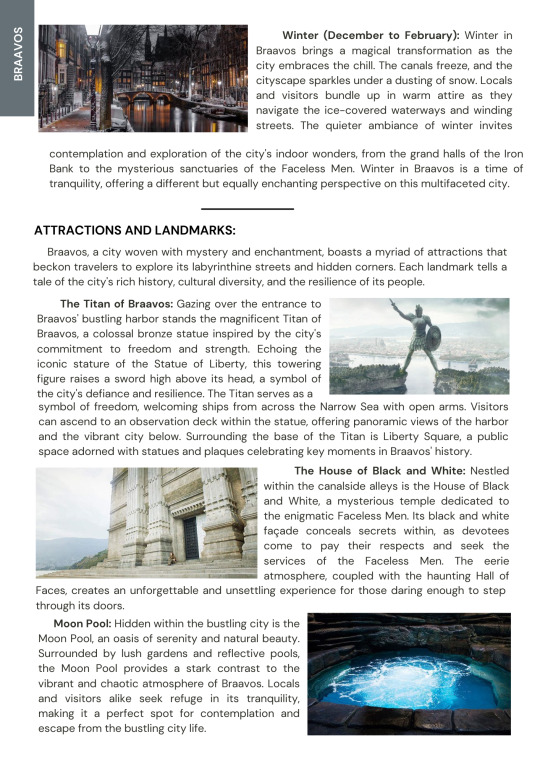


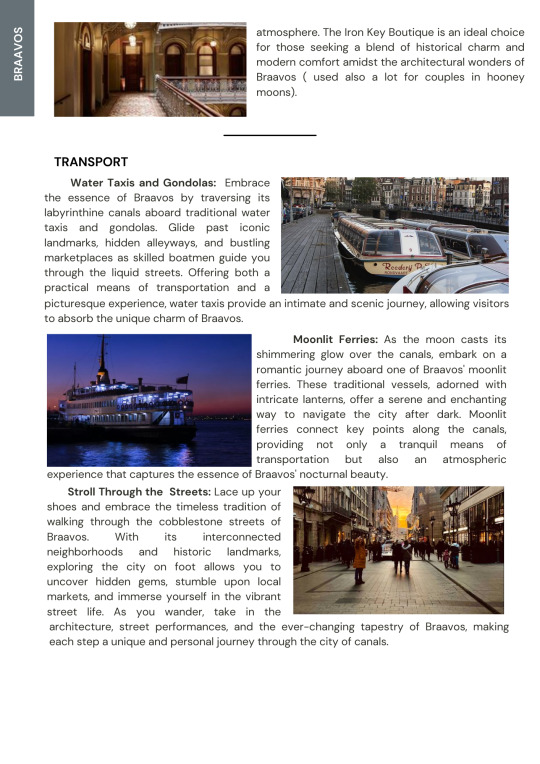
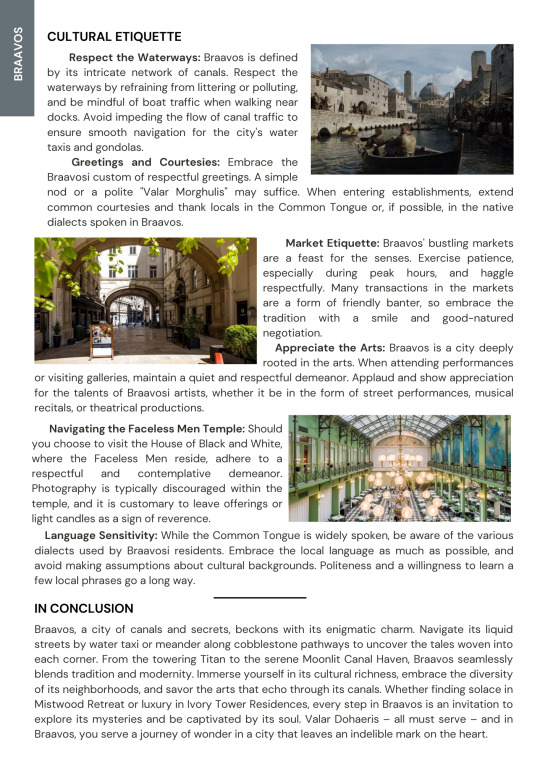
𝗧𝗢𝗨𝗥𝗜𝗦𝗧 𝗔𝗨- 𝗔 𝗦𝗢𝗡𝗚 𝗢𝗙 𝗜𝗖𝗘 𝗔𝗡𝗗 𝗙𝗜𝗥𝗘
So Braavos is a city that I love a lot and I put a lot of thought into it because it’s supposed to be kind of like Venice inspired but I wanted to have more Valyrian influence ( because of the origin of the city state) on it so it’s kind of like a lot of things together. I also see it one of the most cosmopolitan cities in the world of the song of ice and fire, and I don’t think that would change much because bravos even back then was one of the cities who had a freedom of religion and had a population that was very diverse definitely the place I would live in if I was in the world of ASOIAF.
WEST ESSOS. PENTOS. MYR. VOLANTIS. LYS. TYROSH. STEPSTONES. QOHOR. LORATH.
#west essos guide for tourists#esso guide for tourists#game of thrones#a song of ice and fire#got#asoiaf#arya stark#jaqen h'ghar#house of the dragon
115 notes
·
View notes